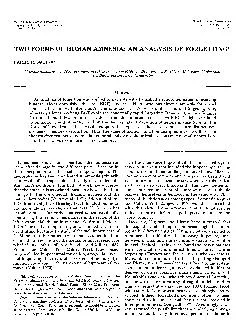PDF-Dorothy Fragaszy Neuroscience and Behavior Program University of Georgia
Author : sherrill-nordquist | Published Date : 2014-12-04
brPage 3br Introduct on Nonhuman primates maintained in captivity have a valuable role in education and research They are also occasionally used in entertainment
Presentation Embed Code
Download Presentation
Download Presentation The PPT/PDF document "Dorothy Fragaszy Neuroscience and Behavi..." is the property of its rightful owner. Permission is granted to download and print the materials on this website for personal, non-commercial use only, and to display it on your personal computer provided you do not modify the materials and that you retain all copyright notices contained in the materials. By downloading content from our website, you accept the terms of this agreement.
Dorothy Fragaszy Neuroscience and Behavior Program University of Georgia: Transcript
Download Rules Of Document
"Dorothy Fragaszy Neuroscience and Behavior Program University of Georgia"The content belongs to its owner. You may download and print it for personal use, without modification, and keep all copyright notices. By downloading, you agree to these terms.
Related Documents














